Mireia Campuzano, Núria Pedragosa and Carme Ramells
For the exhibition dedicated to the artist Antoni Fabrés the painting White Desert has been studied with the infrared reflectography technique. This work was part of a conservation-restoration campaign carried out for this purpose.
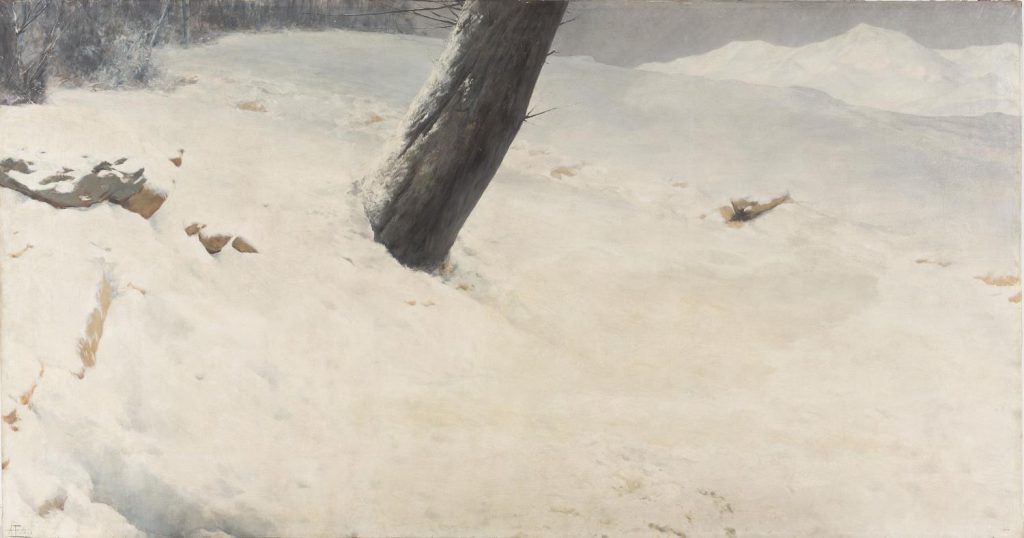
Studying the painting White Desert, by Antoni Fabrés
The painting, done in about 1901 during the artist’s stay in Paris, is a large-format oil painting on canvas (157 x 298 cm), on which Fabrés applied the paint using the paintbrush and the palette knife, secure in his mastery of the technique. It depicts a naturalistic landscape, with a surprising compositional framing, in which the snow-covered ground and the bottom of a tree are the main features.
What led us to study this work is another version by the same artist, owned by the Fabrés family, in which there is a dead soldier lying on the snow in the middle of the composition. This other painting, smaller in size (60 x 110 cm), is titled Dead Sentry, and in it the sentry is the focal point of the painting.
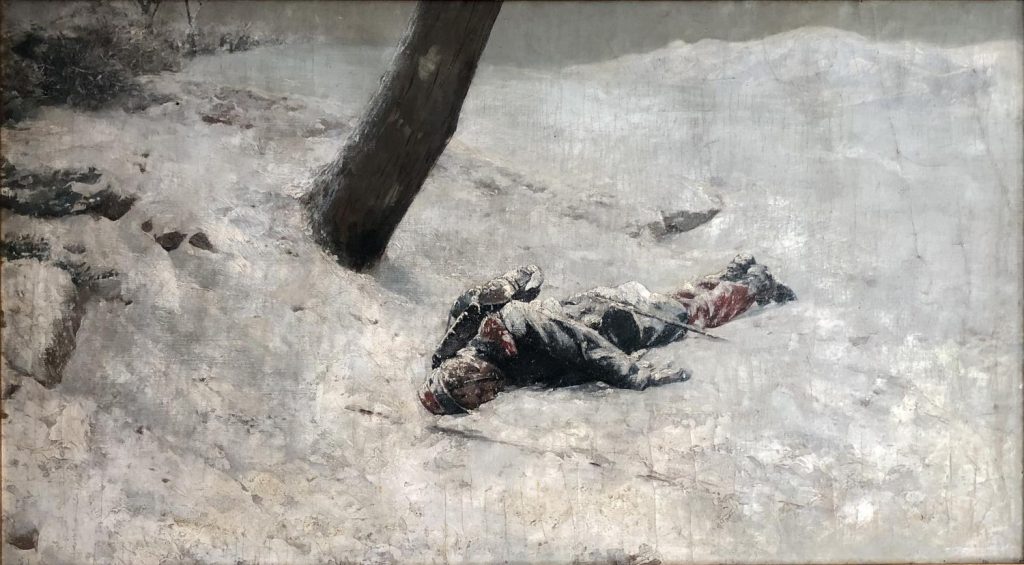
Connections between Dead Sentry and White Desert
In the drawings by Fabrés conserved in the museum, and in the five albums in the Museu Nacional’s Joaquim Folch i Torres Library and Archive, relative to his painting work, no sketches directly related to this composition have been found. But we do see some images reproduced that are related to the paintings in question. In the first album there is a drawing showing a fallen figure that recalls the sentry, with the characteristic torsion of the arm and the palm of the hand facing upwards; and in the third album, there are landscapes reproduced with holm oaks, whose trunks are similar to our leaning tree.
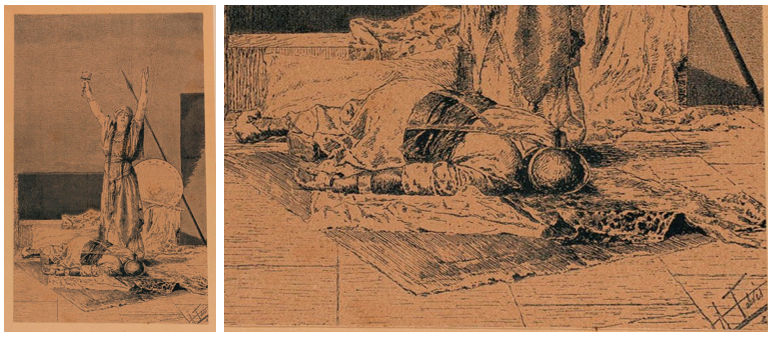
With all these clues it seems logical to think that an analysis with infrared reflectography, in which the underlying paint layers are captured, might supply information about the connection between the painting in the Museu Nacional and Dead Sentry. It is a question of revealing whether the canvas belonging to the artist’s family might be the preparatory sketch for the large-size painting, kept in the museum.
Reflectogram of White Desert
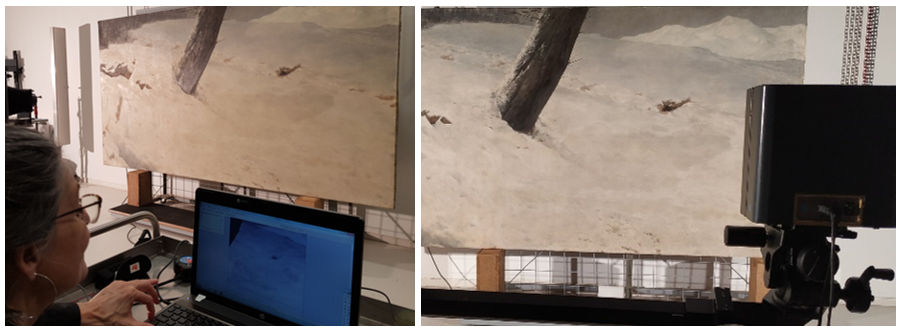
The reflectogram (IR) of White Desert certainly does reveal the presence of a lying figure, in the same place and in the same position as the one in the painting Dead Sentry. Thanks to the reference that this work gives us, it can be claimed that the figure revealed in the reflectogram is that of a dead soldier, with a rifle in front of him and a pack on his back, as can be seen in Dead Sentry. He was most probably a soldier in the French infantry, given the red, white and blue colours of the uniform he is wearing in this painting.
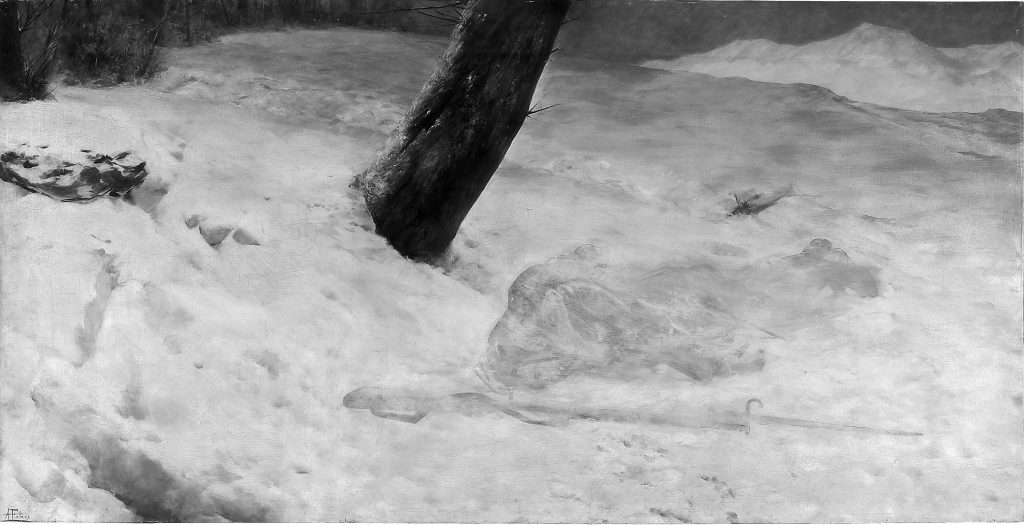
The soldier’s foreshortened position undoubtedly recalls some drawingsby Marià Fortuny, such as Dead Moroccan. Study for the picture ‘The Battle of Tetouan’ or Death of a Roman Soldier. The infrared reflectography technique is a suitable tool for understanding how the sentry was done in White Desert. Fabrés used a traditional method of working by which he sketched the outlines of the shapes with fine lines of graphite or charcoal, like for example those of the outline of the hat and the top half of the backpack. Then, with the paintbrush, he painted on top and constructed them, defining the details.
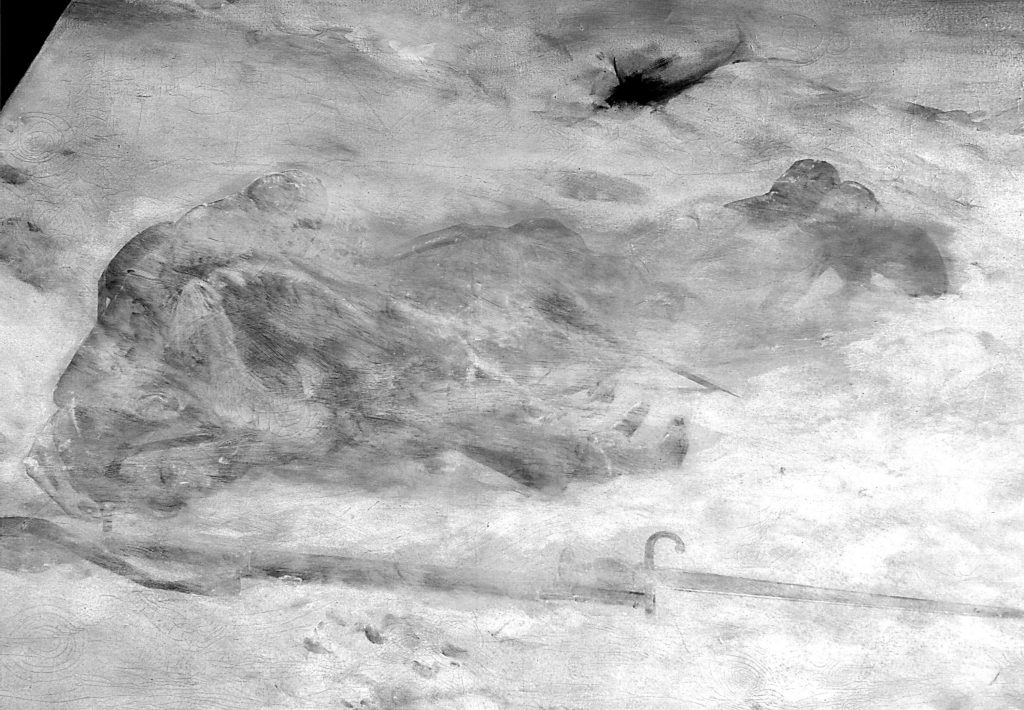
The figure of the soldier can also be clearly seen in the X-ray taken of the canvas White Desert.
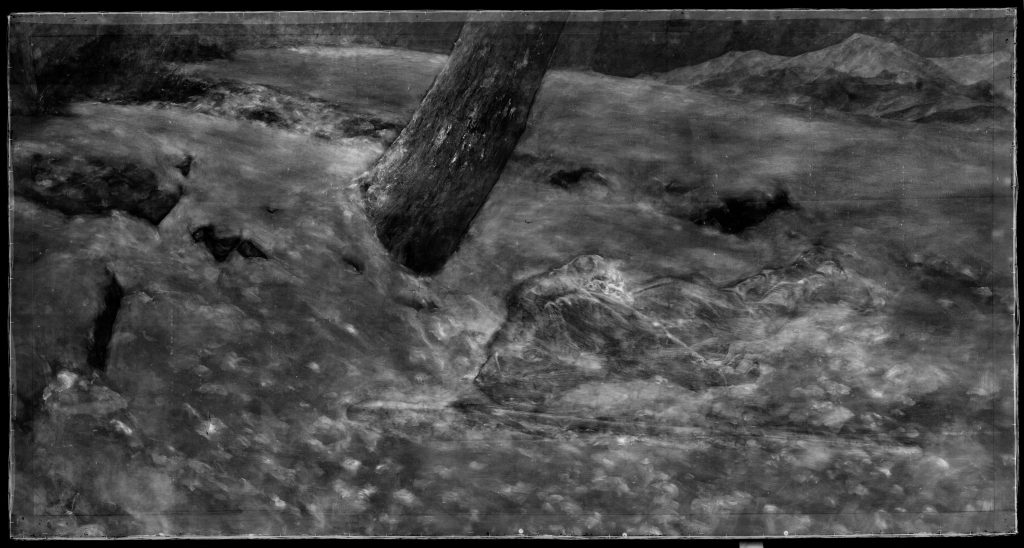
However, not only has the examination with infrared radiation served to corroborate the presence of the soldier, it has also allowed us to go further and identify an inscription to the right of the signature “A. Fabrés” which reads: “Paris, en 1870. / Centinela alerta! / (Guerra francoprusiana)”. (Paris, in 1870. / Sentry Watch Out! / (Franco-Prussian War)”.
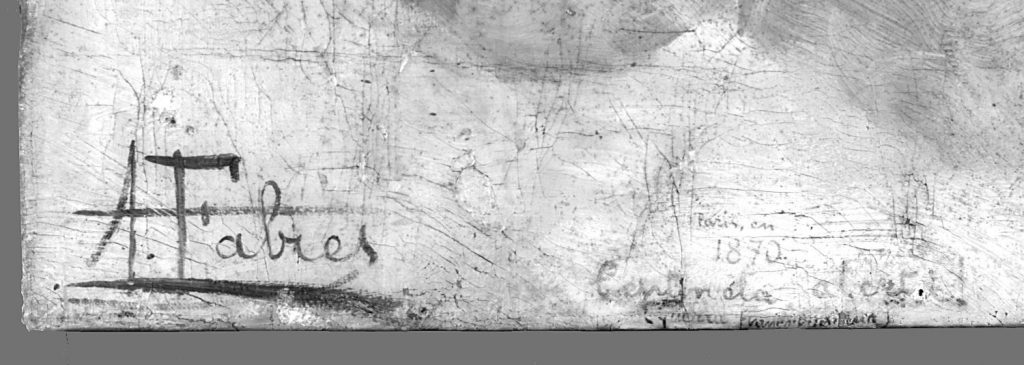
Initally, the artist most probably entitled the large-format work Sentry Watch Out!And he noted the date and the place in which the war was being fought. It had nothing to do with what would end up as a painting of a snow-covered landscape entitled White Desert.
A war painting transformed into a landscape
With everything we have said so far the hypothesis is confirmed that beneath the layers of paint in White Desert there is hidden, in reality, the final, large-size version of the painting Dead Sentry. The most logical thing would have been for the Catalan painter to use a grid to transfer the preparatory sketch to a larger-size canvas, but in the reflectogram this cannot be clearly seen. We only observe a few charcoal lines around the entire edge of the painting delimiting the composition. Once he had fitted in the drawing, the artist most likely erased the supposed grid.
It should be mentioned that this modus operandi is repeated in other works by Fabrés, in which the grid pattern can be observed. To give an example, in the painting Female Slave For Sale,owned by the Diputació de Barcelona, the transparency of the paint layer leaves the grid pattern visible; and in the oil painting The Warrior’s Rest, the lines of the grid can be seen because part of the painting is unfinished.
Aitor Quiney, the show’s curator, writes in the catalogue that, “many of Fabrés’ works have a title with a double meaning.” But thanks to infrared reflectography we can see how, in this case, the artist has also generated a double subject: he transforms a war painting into a disturbing landscape. We do not know why he made this change but an old photograph of his last atelier in Rome shows us the canvas as we know it today.
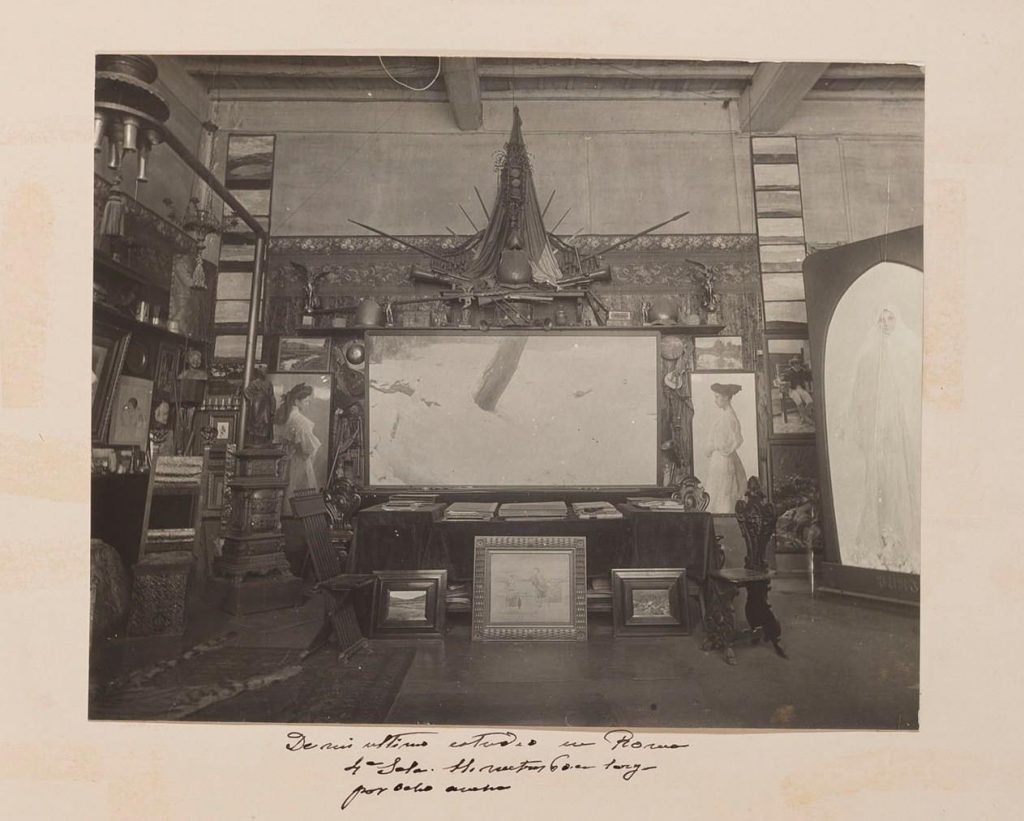
Seeing this image, who would have suspected that beneath a white desert Fabrés would bury a sentry in the French infantry, killed during the Franco-Prussian War of 1870?







